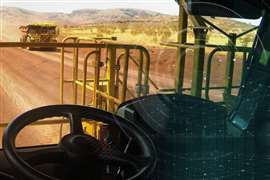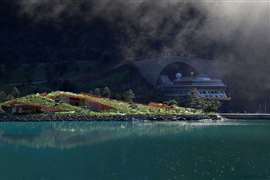R-Series primary screens optimise feed delivery
11 August 2015

CDE Global has launched two models in its R-Series primary screens range that have been introduced to optimise feed to its turnkey primary wash plants as well as to reduce the need for a dedicated operator to feed these plants.
The smaller screen, the R1500 provides a maximum feed capacity of 200 tonnes per hour, with the larger R2500 offering 500 tonnes per hour. Both consist of a feed hopper, screen and conveyors in a number of different configurations. The hopper on the R1500 has a maximum capacity of 7 tonnes (with optional extendable hopper sides) while for the R2500 the comparable figure rises to 20 tonnes, The hopper on both has been designed to permit feed to be delivered from three sides to provide maximum flexibility to cope with specific site conditions, and both can be provided with either a belt feed or apron feed.
Stewart Cusick, product development engineer at CDE Global, said “The R-Series allows for a constant, even flow of material to be delivered to the integrated screen before being sent for additional screening, washing and sizing. The hopper capacity – particularly on the R2500 machine – allows for charge filling of the hopper, which frees up an operator and vehicle to complete other jobs on site ultimately reducing the level of operator intervention required with the processing plant.”
Product development manager Kevin Vallelly explained that the R-Series was developed as an efficient delivery system when more difficult materials are being processed. “Whether it’s C&D waste material, sticky iron ore or claybound crushed rock, we’re increasingly helping our customers design systems which are able to process more challenging materials,” he said before going on: “A key part of ensuring the processing plant performs at maximum efficiency with minimum operator intervention is getting the feed system right and we spent over two years developing the R-Series, which included extensive testing at sites in Ireland, UK, Germany and Scandinavia on a wide variety of different materials. This has led to the launch of the R-Series which allows our customers to maximise the production capacity of their additional processing phases by ensuring a consistent flow of material to the plant.”






